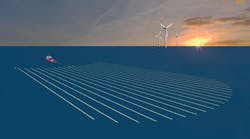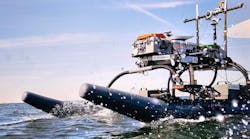Offshore staff
LEEDS, UK –GETECH is researching how to improve effectiveness of satellite-based gravity data for exploration of offshore hydrocarbon-bearing structures worldwide.
The nine-month, industry-funded study will determine how advanced ocean measurements from the three cycle polar geodetic missions of the CryoSat-2 satellite (2011-13) can enhance the accuracy, resolution, and reliability of gravity data. Information will be supplied by the European Space Agency.
A successful outcome should lead to GETECH performing a global study, starting early next year, to map all the world’s continental margins out to 500 km (310 mi) from shore. This will incorporate data from NASA’s Jason-1 oceanographic satellite, assuming it goes into geodetic mission mode in 2013.
GETECH says one year’s data from CryoSat-2 will provide up to 50% additional detail compared with what is available from previous satellite missions. The near-polar orbit will generate tracks with different orientations that will infill existing data coverage.
The company believes its processing methodology will be well suited to extraction of high resolution gravity data from this combined data set. In addition, CryoSat-2 is acquiring data with a new synthetic aperture radar system, which promises to deliver improved accuracy over certain parts of the world.
The offshore industry uses satellite gravity data for preparing bids for licensing round blocks and for preparing multi-client seismic surveys.
GETECH adds that the R&D study will refine methodologies and algorithms applied previously to GeoSat and ERS-1 data to handle the two altimeter data types being collected by CryoSat-2. Four test areas have been agreed in the Caspian Sea, Barents Sea, north Brazil margin, and north Colombia/Venezuela margin to check data resolution compared with terrestrial ship borne data.
4/4/2012




